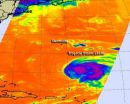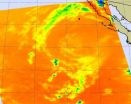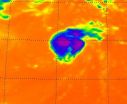(Press-News.org) The National Human Genome Research Institute today announced the results of a five-year international study of the regulation and organization of the human genome. The project is named ENCODE, which stands for the Encyclopedia of DNA Elements. In conjunction with the release of those results, the Journal of Biological Chemistry has published a series of reviews that focus on several aspects of the findings.
"The ENCODE project not only generated an enormous body of data about our genome, but it also analyzed many issues to better understand how the genome functions in different types of cells. These insights from integrative analyses are really stories about how molecular machines interact with each other and work on DNA to produce the proteins and RNAs needed for each cell to function within our bodies," explains Ross Hardison of Pennsylvania State University, one of the JBC authors.
Hardison continued: "The Journal of Biological Chemistry recognized that the results from the ENCODE project also would catalyze much new research from biochemists and molecular biologists around the world. Hence, the journal commissioned these articles not only to communicate the insights from the papers now being published but also to stimulate more research in the broader community."
The human genome consists of about 3 billion DNA base pairs, but only a small percentage of DNA actually codes for proteins. The roles and functions of the remaining genetic information were unclear to scientists and even referred to as "junk DNA." But the results of the ENCODE project is filling this knowledge gap. The findings revealed that more than 80 percent of the human genome is associated with biological function.
The study showed in a comprehensive way that proteins switch genes on and off regularly – and can do so at distances far from the genes they regulate – and it determined sites on chromosomes that interact, the locations where chemical modifications to DNA can influence gene expression, and how the functional forms of RNA can regulate the expression of genetic information.
The results establish the ways in which genetic information is controlled and expressed in specific cell types and distinguish particular regulatory regions that may contribute to diseases.
"The deeper knowledge of gene regulation coming from the ENCODE project will have a positive impact on medical science," Hardison emphasizes. For example, recent genetic studies have revealed many genomic locations that can affect a person's susceptibility to common diseases. The ENCODE data show that many of these regions are involved in gene regulation, and the data provide hypotheses for how variations in these regions can affect disease susceptibility, adds Hardison.
The effort behind the ENCODE project was extraordinary. More than 440 scientists in 32 labs in United States, the United Kingdom, Spain, Singapore and Japan performed more than 1,600 sets of experiments on 147 types of tissue. The results were published today in one main integrative paper and five other papers in the journal Nature, 18 papers in Genome Research and six papers in Genome Biology.
###
The JBC thematic review series was organized by Peggy J. Farnham of the University of Southern California. Farnham is also an author on the main integrative paper in Nature, as were seven other JBC authors, including Hardison, Vishwanath R. Iyer, Bum-Kyu Lee, Raymond K. Auerbach, Ghia Euskirchen, Victor X. Jin and Michael Snyder.
View and download the JBC reviews at https://www.dropbox.com/sh/047x6l5w54t9byi/zP3abN_7Oc?m.
Visit the ENCODE project portal, www.encodeproject.org, for more information.
About the American Society for Biochemistry and Molecular Biology
The ASBMB is a nonprofit scientific and educational organization with more than 12,000 members worldwide. Most members teach and conduct research at colleges and universities. Others conduct research in various government laboratories, at nonprofit research institutions and in industry. The Society's student members attend undergraduate or graduate institutions. For more information about ASBMB, visit www.asbmb.org.
Press release written by Danielle Gutierrez.
END
The most-studied mass extinction in Earth history happened 65 million years ago and is widely thought to have wiped out the dinosaurs. New University of Washington research indicates that a separate extinction came shortly before that, triggered by volcanic eruptions that warmed the planet and killed life on the ocean floor.
The well-known second event is believed to have been triggered by an asteroid at least 6 miles in diameter slamming into Mexico's Yucatán Peninsula. But new evidence shows that by the time of the asteroid impact, life on the seafloor – mostly species ...
Montreal, September 5, 2012 – Being the last one picked for the team, getting left out of the clique of cool girls, having no one to sit with at lunch… For children, social exclusion can impact everything from emotional well being to academic achievements.
But what does it mean for the kids doing the excluding? Is the cure a one-size-fits-all approach that requires kids to include others, regardless of the situation at hand? Not necessarily, says new research from a professor now at Concordia University.
Unlike previous studies where researchers created hypothetical ...
CAMBRIDGE, MA -- Only about 1 percent of the human genome contains gene regions that code for proteins, raising the question of what the rest of the DNA is doing. Scientists have now begun to discover the answer: About 80 percent of the genome is biochemically active, and likely involved in regulating the expression of nearby genes, according to a study from a large international team of researchers.
The consortium, known as ENCODE (which stands for "Encyclopedia of DNA Elements"), includes hundreds of scientists from several dozen labs around the world. Using genetic ...
Infrared data from NASA's Aqua satellite shows that Tropical Storm Leslie has been causing problems for itself.
Tropical Storm Leslie has been on a slow track in the Atlantic, and because of that, the storm is kicking up cooler waters from below the ocean surface. Those cooler waters were seen in infrared imagery on Sept. 5 at 0611 UTC (2:11 a.m. EDT) taken by the Atmospheric Infrared Sounder (AIRS) instrument that flies aboard NASA's Aqua satellite. The cooler waters are responsible for Leslie's slow strengthening. Sea surface temperatures need to be at least as warm ...
Post-tropical cyclone John has been "flushed" out of existence in the eastern Pacific Ocean, and infrared NASA imagery revealed warmer cloud top temperatures and virtually no precipitation from John's remnants on Sept. 4.
When NASA's Aqua satellite flew over post-tropical storm John on Sept. 4 at 21:23 UTC (5:23 p.m. EDT) the Atmospheric Infrared Sounder (AIRS) instrument revealed that cloud top temperatures in the storm had warmed over the previous 24 hours. AIRS data also showed there was one very tiny area of convection (rising air that forms the thunderstorms that ...
For years policymakers have attempted to replace Medicare's fee-for- service payment system with approaches that pay one price for an aggregation of services. The intent has been to reward providers for offering needed care in the most appropriate and cost-effective manner. But many of these programs have known pitfalls, says Stuart Altman, an economist and the Sol C. Chaikin Professor of National Health Policy at the Heller School for Social Policy and Management, Brandeis University.
On Friday, Sept. 7, Altman and his Heller school colleague Robert Mechanic, will ...
NASA's Aqua satellite shows that tiny Tropical Storm Michael had some strong thunderstorms wrapped around its center and in a band of thunderstorms in its northeastern "arm" or quadrant.
The Atmospheric Infrared Sounder (AIRS) instrument that flies aboard NASA's Aqua satellite captured in infrared image of Tropical Storm Michael on Sept. 5 at 0611 UTC (2:11 a.m. EDT) and noticed the strongest thunderstorms and coldest cloud top temperatures around the center of circulation and in a band of thunderstorms to the northeast of Michael's center. Those cloud top temperatures ...
Be warned, popularity may cause lung cancer, heart disease, and emphysema.
New research from the University of Southern California (USC) and University of Texas finds that popular students in seven Southern California high schools are more likely to smoke cigarettes than their less popular counterparts.
The study, which appears online this week in the Journal of Adolescent Health, confirms trends observed in previous USC-led studies of students in the sixth through 12th grades across the United States and in Mexico.
"That we're still seeing this association more ...
Sinking through the inky ocean, it would seem that there is little light at depth: but you'd be wrong. 'In the mesopelagic realm [200 m] bioluminescence [light produced by animals] is very common', says Sönke Johnsen from Duke University, USA, explaining that many creatures are capable of producing light, yet rarely do so. But how much light do the inhabitants of the ocean floor (benthos) generate? Explaining that some bioluminescence is generated when organisms collide, Johnsen says, 'In the benthos you have a current moving over complicated ground with all the things ...
DURHAM, N.C. -- Crabs living half-a-mile down in the ocean, beyond the reach of sunlight, have a sort of color vision combining sensitivity to blue and ultraviolet light.
Their detection of shorter wavelengths may give the crabs a way to ensure they grab food, not poison.
"Call it color-coding your food," said Duke biologist Sönke Johnsen. He explained that the animals might be using their ultraviolet and blue-light sensitivity to "sort out the likely toxic corals they're sitting on, which glow, or bioluminesce, blue-green and green, from the plankton they eat, which ...



